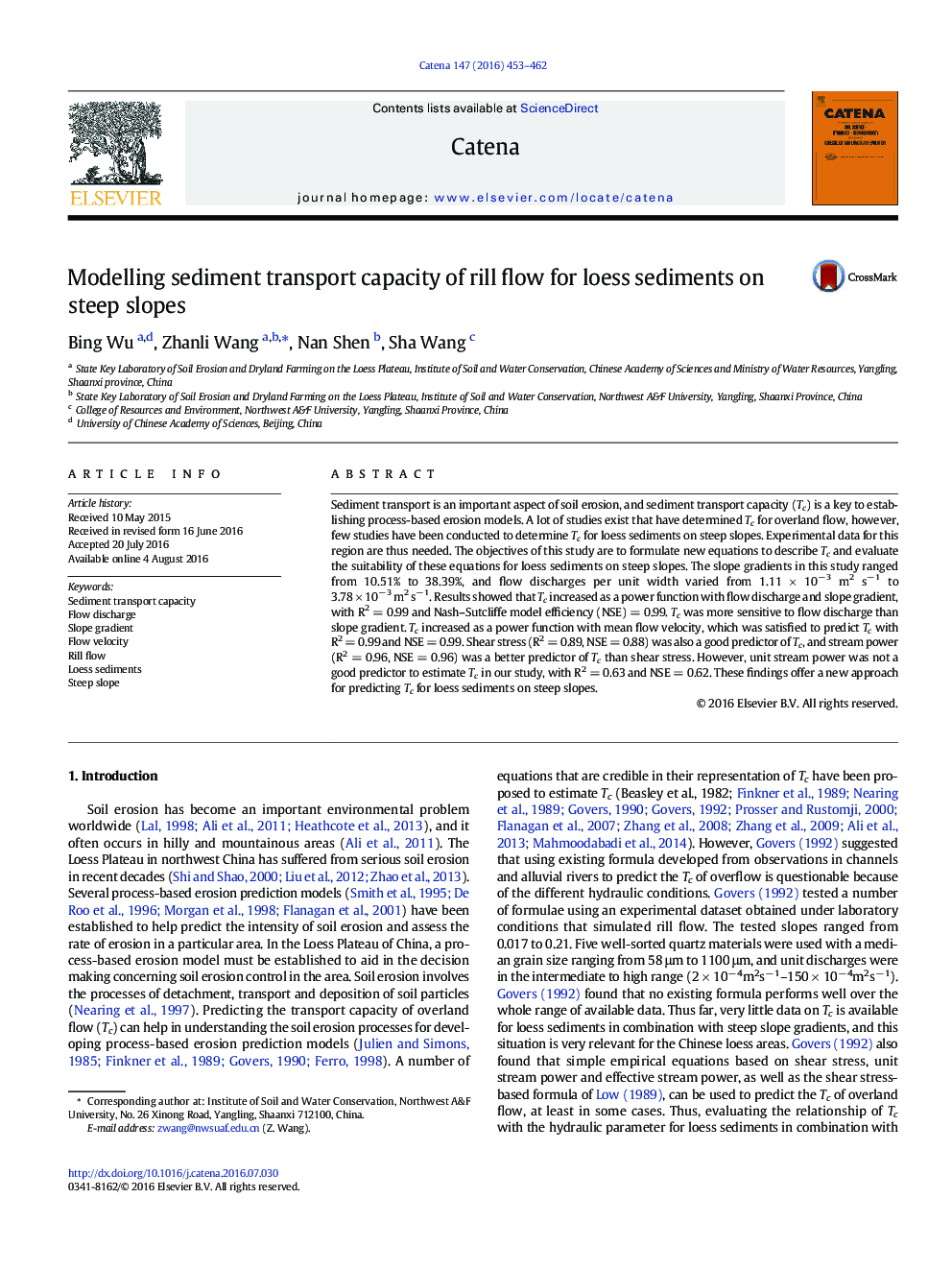| Article ID | Journal | Published Year | Pages | File Type |
|---|---|---|---|---|
| 6407751 | CATENA | 2016 | 10 Pages |
â¢Response of sediment transport capacity to the hydraulic parametersâ¢Response of sediment transport capacity to flow discharge and slope gradientâ¢Based on the experiments, some new models were established to predict sediment transport capacity satisfactorily.
Sediment transport is an important aspect of soil erosion, and sediment transport capacity (Tc) is a key to establishing process-based erosion models. A lot of studies exist that have determined Tc for overland flow, however, few studies have been conducted to determine Tc for loess sediments on steep slopes. Experimental data for this region are thus needed. The objectives of this study are to formulate new equations to describe Tc and evaluate the suitability of these equations for loess sediments on steep slopes. The slope gradients in this study ranged from 10.51% to 38.39%, and flow discharges per unit width varied from 1.11 Ã 10â 3 m2 sâ 1 to 3.78 Ã 10â 3 m2 sâ 1. Results showed that Tc increased as a power function with flow discharge and slope gradient, with R2 = 0.99 and Nash-Sutcliffe model efficiency (NSE) = 0.99. Tc was more sensitive to flow discharge than slope gradient. Tc increased as a power function with mean flow velocity, which was satisfied to predict Tc with R2 = 0.99 and NSE = 0.99. Shear stress (R2 = 0.89, NSE = 0.88) was also a good predictor of Tc, and stream power (R2 = 0.96, NSE = 0.96) was a better predictor of Tc than shear stress. However, unit stream power was not a good predictor to estimate Tc in our study, with R2 = 0.63 and NSE = 0.62. These findings offer a new approach for predicting Tc for loess sediments on steep slopes.
